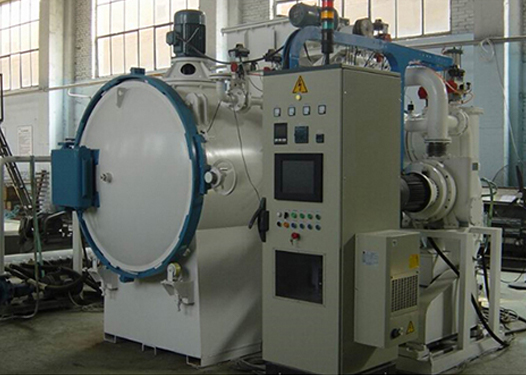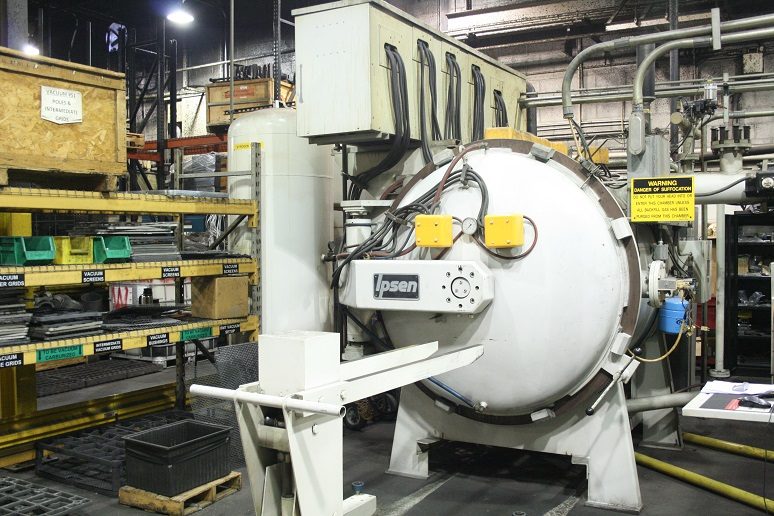Metal components are necessary and vital for construction and various other projects and products. Some of these products include technology that goes into your computer and smartphone. Creating these products requires a reliable joining technique from a steel heat treatment company that understands metallurgy.
This technique creates the right shape or frame for any product involving the joining of metal materials. There are times when simple welding, which while effective can often look messy, just doesn’t make the grade. This is where options such as the vacuum brazing services at Specialty Steel Treating come into play.
What Is Vacuum Brazing?
Brazing is one technique of joining two pieces of metal at a joint using a special metal filler. The brazing temperature is lower than the melting points of the two joining pieces. The filler material is different than the main two pieces. The filler material has a lower melting point, also.
The brazing process melts the filler into place to connect the two metal pieces. High-temperature applications typically use brazing. Most furnaces used for this must be able to meet or exceed 1200 degrees Celsius.
A vacuum furnace completes the furnace brazing process. A vacuum furnace is a special device designed for furnace brazing, sintering, annealing steel, and heat treating metals while surrounding them by a vacuum. This creates a low-contamination environment, particularly lacking in oxides which can alter the color or appearance of the metal in use. The furnace brazing process results in a high-strength, flux-free and clean joint.
Advantages to Vacuum Brazing
The process of heating any type of metal has a tendency to alter its makeup, particularly when dealing with metallurgical temperatures. Companies employing furnace brazing services can tell you traditional brazing exposes metals to oxides and other chemicals that could compromise the integrity of the joint or the metal pieces. However, a vacuum environment protects the metals and filler during the joining process.
Advantages to brazing in a vacuum include that the environment is free of contaminants, so the metal comes out shiny, bright and clean. There is better uniformity of temperature throughout all of the metal, and the process of heating and cooling the metal slowly reduces the residual stress, helping the metals to maintain their integrity and strength.
Some vacuum furnaces have a quick cooling option known as quenching (a variation of oil quenching), which involves the use of Argon, an inert gas. In addition, the brazing, heat treating, and age hardening can conveniently all be done in one furnace cycle, saving time. This is one reason why vacuum brazing is a great option for high-volume production.
Vacuum brazing is ideal for many different applications. Vacuum brazing requires a high attention to detail and expertise. It’s vital you select an approved metal treatment company with approved furnace brazing services, equipment, and processes.
Examples of Brazing Filler Metals:
- Silver-copper
- Copper-zinc
- Copper-phosphorous
- Palladium
- Nickel
Brazing Industry Applications:
- Computer technology
- Medical
- Aerospace
- Defense
- Automotive
Learn more about the industries SST provides steel treating services for.
Brazing vs Soldering

The truth is that these joining techniques are actually quite similar to each other. Both of them join two or more other components without the need to melt the base components to fit them together. Instead, both techniques rely on using a filler metal to act as a glue that attaches one piece to the next. This is just the tip of the iceberg, so let’s take a look at both of these in greater detail.
Understanding Brazing and Soldering
According to the American Welding Society, brazing is a joining process that occurs at high temperatures, usually above 840°F. The materials joined in brazing get heated to about 100°F higher than the liquid temperature of the filler metal to form a solid and permanent bond. Soldering, on the other hand, is ideal for metal fillers that have a lower liquid temperature falling below the 840°F threshold.
There are several ways furnace brazing services apply heat for brazing and soldering. These include the following:
- Combustion and radiant heating
- Flames or torches
- Inductive heating
- Resistive heating
- Lasers
Workers can complete both joining methods in either open and closed spaces. One of the key benefits of both is that the use of filler metal allows them to join different components together. This differs from welding, where both components generally need to be of similar material.
When it comes to brazing vs soldering furnace brazing, a part of the decision-making process comes down to preference. Still, there are specific instances where one is more suitable than the other.
Why Choose Brazing
AWS provides several reasons that people should consider using brazing to join metals together. Here are two of those. One of the top reasons many clients prefer brazing over soldering is the strength. There is a common misconception that only welded joints are strong. While they are often stronger than components joined together by brazing, the AWS states that brazed joints are as strong as the base metals that are joined together.
Secondly, brazing is a common joining solution, which gives peace of mind to some clients. You find brazing work completed in many industries and products. These include cookware, automotive applications and HVAC systems. While it’s not quite a one-size-fits-all solution, it does come close and demonstrates flexible application.
Why Choose Soldering
Brazing does have its limitations. Here are two reasons you may choose soldering instead. As previously noted, brazing is a high-temperature process. If the base materials being joined together have a melting point below 1000°F, then it is better to rely on soldering. Otherwise, you would end up melting the base materials, which may cause damage and a miscalculation in how well they fit together or into the larger framework the components operate in.
Finally, most soldering jobs you may come across include joining delicate materials together. A common example is small components on the motherboard of a computer. Thus, while soldering often leads to weaker connections, this may be desirable, especially if the client prefers a more semi-permanent connection. In the case of a motherboard, for instance, the client may later wish to remove connections for upgrade purposes.
Discuss Your Needs With Us
Specialty Steel Treating offers a variety of steel treating services. Our high-quality vacuum furnaces are ready to braze the joints you need for whatever your application might be.
To learn more about our facility, equipment, and unique processes, contact us online or call one of our facilities directly in Michigan or Connecticut. In addition, feel free to request a quote using our convenient online form.


